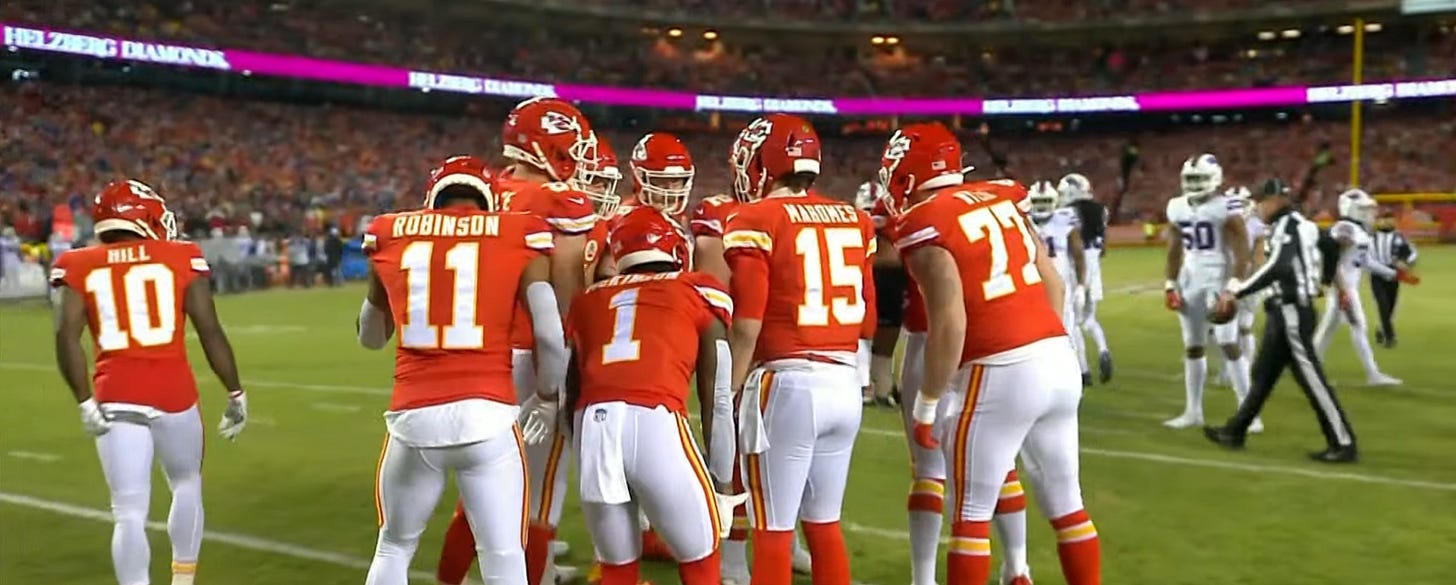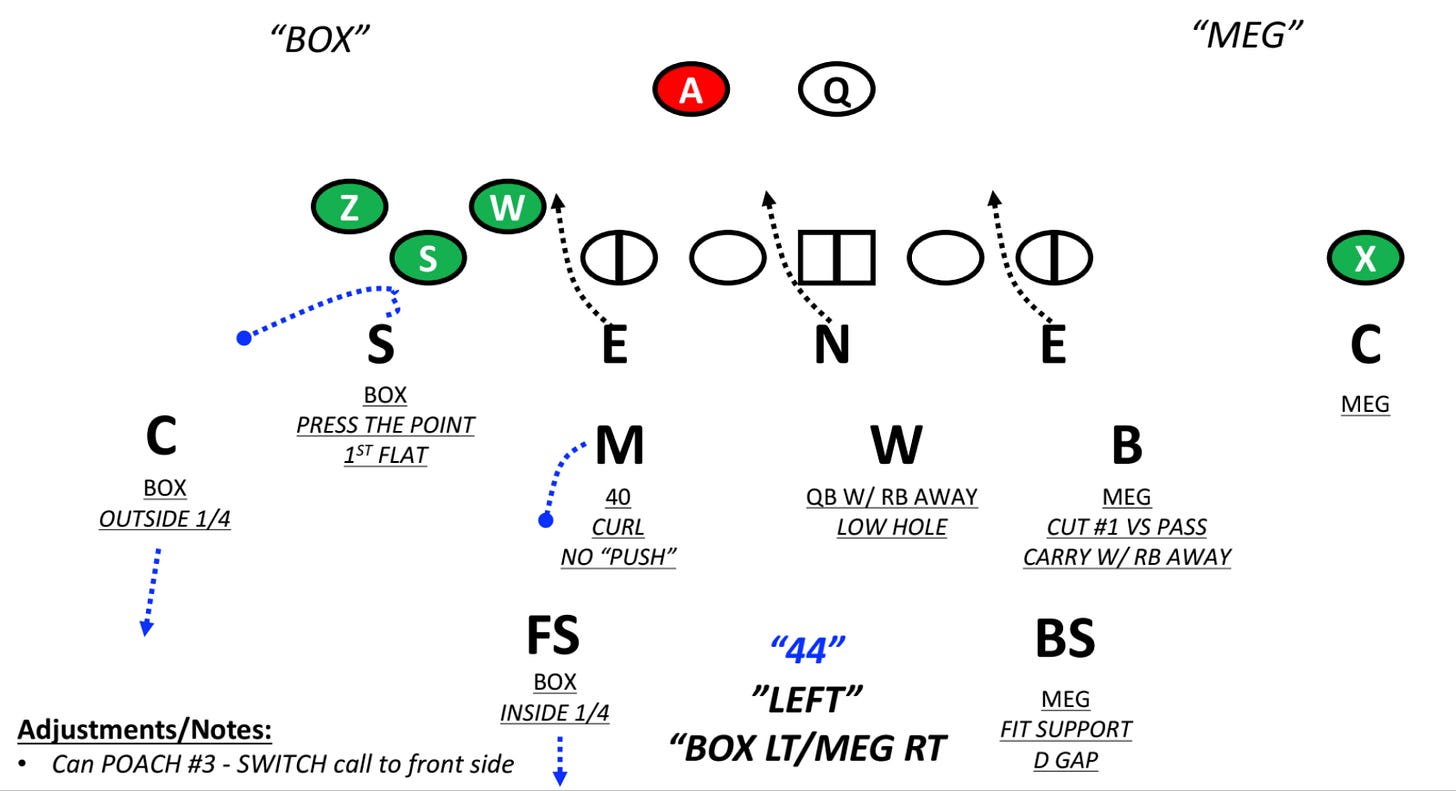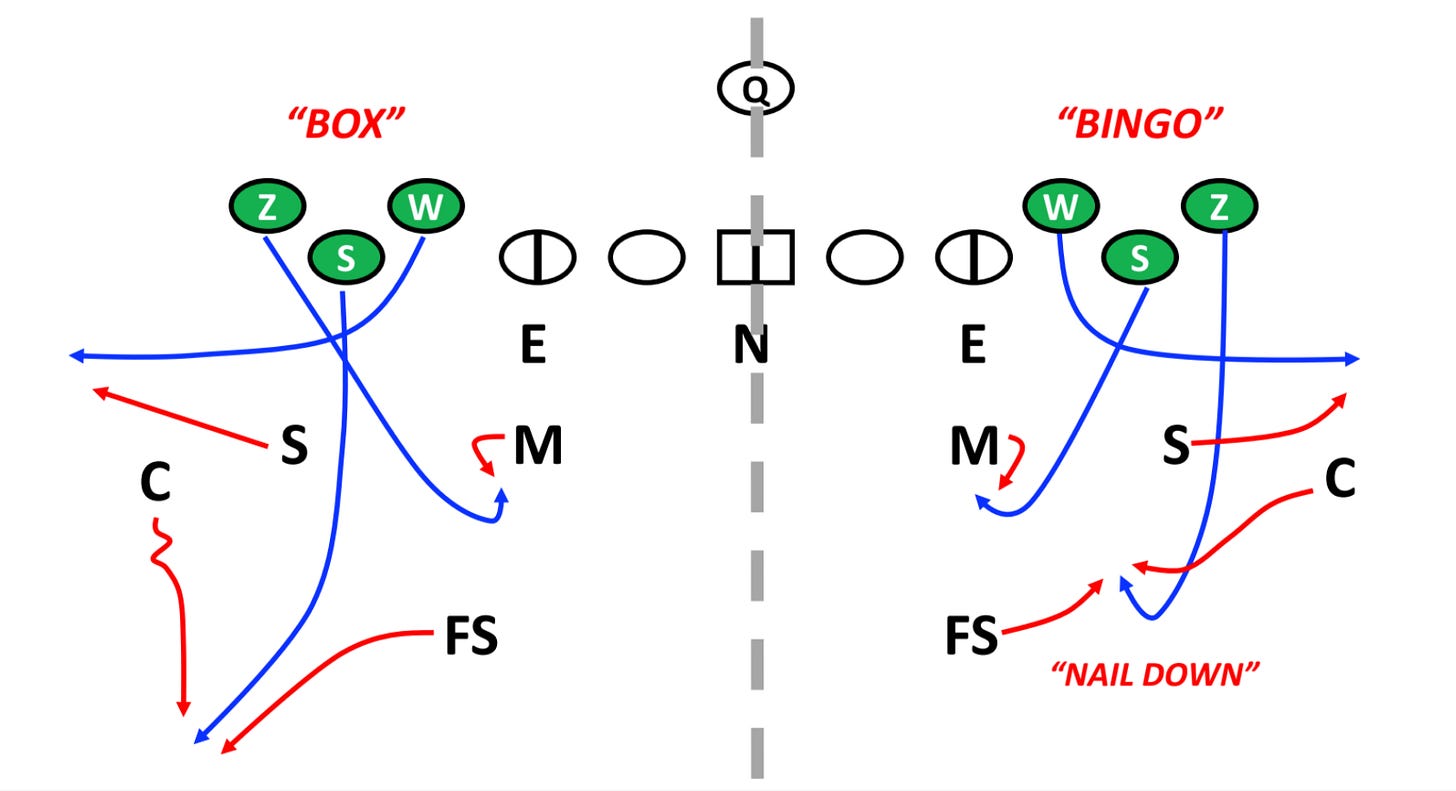Defending "Quads" Bunch Formations
MQ takes a look at how the Bills defended a Chiefs' Quads Bunch set
Sometimes, you have to shake your head when watching the Chiefs’ offense. It is a track meet on grass with speedy WRs darting in every direction, stretching the defense’s coverage to the max. Crossing routes work under verticals creating layers while using the whole plane of the field. Horizontal (flat) routes push to the sideline and open up space for crossers to work behind them while vertical pushing routes provide even more space. Everything is in sync and fast.
The constant ebb and flow of the offense is why it has been one of the most dominant units for the past several years. QB Patrick Mahomes is a perfect orchestrator of this high-powered onslaught of points and speed. From off-platform throws to bombs from the pocket, Mahomes is the ideal creator for HC Andy Reid and OC Eric Bieniemy’s offense.
Kansas City does an excellent job of using formations to create mismatches for the defense. The utilization of reduced sets along with stacks and bunches stresses man or man-match zone coverages while giving leverage to the WRs. Additionally, the defense has to switch or chase with rubs and crossing routes, both lending to the offense’s ability to create space. The Chiefs use one of my favorite formations, their Bunch sets with the RB to the three WR side.
Quads formations, in general, are complex for any defense to defend. There is not an easy way to attack them. With four to a side, the offense has overloaded the coverage and forced the defense to push everything that way. An offense is almost guaranteed single coverage on someone. Therefore, when looking at Bunch formations, especially when placing the RB to the same side (Quads), it is essential to see what the offense is trying to accomplish.
Is the offense loading the zone and trying to run someone against the grain? Are they isolating a defender on the single-WR to win a one-on-one match-up? Does the offense have leverage in the run game (Gun Duo is popular)? These are fundamental questions that must be asked when defending a Quads Bunch.
On the other hand, the defense can’t have just one way of defending Bunches. Anything static will get you beat over time, especially in the NFL. Once the offense learns your rules, you are dead in the water. They can now manipulate the situation, and that is what offenses are designed to do, create space. Below are two examples of man coverage from the Saban playbook.
When playing man-match, there are multiple different ways to switch the routes. From Lock-n-Level (C1), where each defender locks on to their man and gets at different levels, to Traffic (C0), where the defense mans the “point” and “banjos” the other two WRs with the inside and outside defender, there are multiple ways to skin a cat. When playing zone, most defenses will play some variation of Box (below) that fits nicely into a Quarters defense because it matches its foundational teaching, Box coverage, or “country” Quarters.
Running Box allows the defense to keep their two-high shell and split-field coverage while basing out of Quarters. Box is basically “country” or “rail” Quarters. I use the term rail because the DBs play as though they are on rails or tracks, working straight back in their zones. The coverage creates a safety net on either side of the Bunch. I liken it to playing bowling with the safety bumpers on. The CB and Safety cap any verticals, staying on their landmarks.
The issue with Box is that the CB is out-leveraged inside. It is too easy for the offense to push a WR out to the flat, forcing the Sam to expand and work a WR into the open space. A great example of this would be to run Dagger out of Bunch, pushing #3 to the flat while #2 runs an inside Seam (running at the Safety), and finish with #1 running a Dig. Though the Mike should be there, if he chases the Seam or the QB throws off the break of #1, there is ample room to make a play. Another great way to attack Box is with Spacing concepts like the one below on the right.
The diagram illustrates the usefulness of Box versus Y-Corner (left). The Quarters distribution quickly picks up the concept. Anytime an offense uses horizontal rubs and a vertical push route, Box is a great choice. But what if the offense uses Spacing concepts like the one on the left? Bingo is a better answer.
As illustrated above, if the defense runs Box as their sole coverage concept, they expose themselves to Spacing concepts. Versus Box, all the #1 WR has to do is wall off the CB as he breaks inside. Basketball on grass. There is space there for the WR to work because the low spot route occupies the Mike and the Safety is on his “rail.” Creating an intuitive coverage is a better way to go.
When teaching Bunch coverages from our zone look, we read the routes. Since we are already playing “match” coverage, why not extend that to Bunch sets and get the best of both worlds? Combining Box and Bingo gives us an answer to pick routes and Spacing concepts. All the CB and FS have to do is read the #1 WR. If “one stays one,” we play Bingo expecting a Spacing or Flood concept (Fade by #1 and a Sail/out by #2 or #3). The concepts allow us to “cone” or double the main threat. We don’t play on rails yet match the routes intuitively, just like we would in base coverage.
Keep reading with a 7-day free trial
Subscribe to MatchQuarters by Cody Alexander to keep reading this post and get 7 days of free access to the full post archives.







